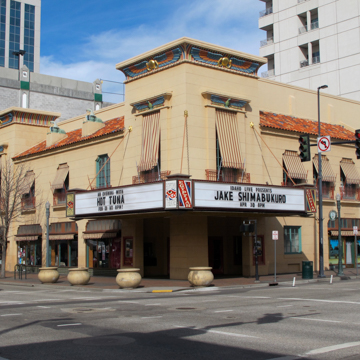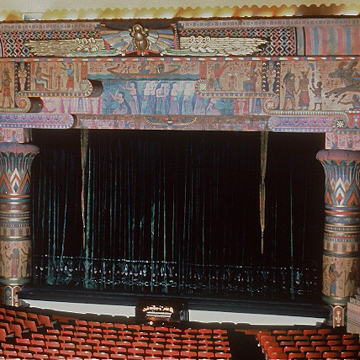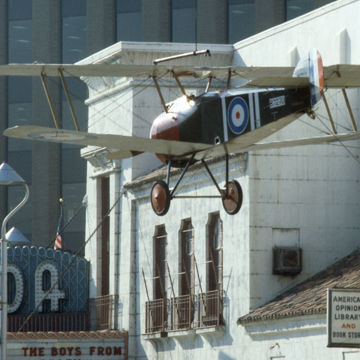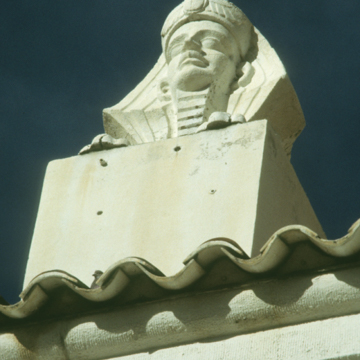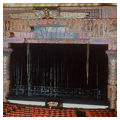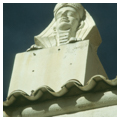You are here
Egyptian Theater
In its heyday, Boise’s Egyptian Theater was the largest, most opulent movie palace in Idaho. In 2016 it is a testament to action by citizens committed to the belief that beautiful buildings are worth fighting for and investing in. The cinema is one of Boise’s most cherished historical landmarks and the theater’s fanciful architecture has remained a civic focus for the city’s residents for more than eighty-five years.
In 1927, in the midst of the movie palace era (1920s to 1940s), Boise entrepreneur Leo J. Falk and a group of business partners commissioned Frederick Hummel, a partner in Idaho’s prestigious Hummel and Hummel firm, to design this lavish cinema. The discovery of King Tut’s tomb in 1922 fueled such public interest in Egyptology that as many as one hundred Egyptian-style theaters were built in the United States in that decade. Along with Boise’s Egyptian Theater, at least two others still operate in the Intermountain West—in Park City and Ogden, Utah. Boise’s Egyptian opened on April 17, 1927 before a full house of excited Boiseans who watched John Barrymore’s Don Juan. It has operated continuously since, except for a time in the 1970s when the theater fell into disrepair and came within 30 days of a wrecking ball. The only notable changes are the theater’s name, along with the disappearance of a tall vertical sign that once graced its marquee. Though the theater was briefly called the Ada when it came under new ownership in the 1940s, named for the county in which Boise is located, in 1977 preservation-minded owners changed the name back to the Egyptian.
The Egyptian commands the corner of Main Street and Capitol Boulevard, one of Boise’s busiest downtown intersections. Dominating the reinforced concrete building are two square, battered towers rising three stories, each topped with a flared and highly decorated cornice. The towers are also defined by two-story windows decorated with Egyptian details and long striped awnings. During the 1940s and 1950s, the original awnings were removed, but current owners restored them.
While the theater’s exterior is well wrought with Egyptian-inspired detail, the interior of this 1,600-seat movie house is breathtaking. Four great Egyptian columns, with palm capitals, flank the stage with gilded statues of seated scribes between them. The entablature is profusely decorated with replicas of Egyptian figures and symbols. The proscenium is overwhelmed with painted ornamental detailing, including scarabs, bundled reeds, and stylized swans. Though Frank Hummel apparently studied Egyptian art while designing the theater, the interior decor is more Egyptian fantasy than Egyptian archaeology.
Boise was once home to six palace cinemas, though none was as large or ornate as the Egyptian. During the city’s urban renewal phase in the 1960s and 1970s, five of these were razed and the bulldozers came close to demolishing the Egyptian (then known as the Ada Theater) as well. A group of citizens led by Ron Thurber, an architect and longtime resident, came together initially to save the famous house organ, which Thurber spent hundreds of hours bringing back to its prime. To celebrate the organ’s restoration, the Egyptian Foundation (as the preservation group called itself) screened Wings, a 1927 silent movie about a World War I ace, arranging for a vintage Sopwith Camel to hang from a crane above the theater’s busy intersection. The event was so successful that it sparked a movement to save the Egyptian itself.
By the late 1970s, the theater’s new owner, Earl Hardy, was determined not to let the building deteriorate, despite concerns about its poor structural health and public declarations that it was a “historic eyesore.” Beginning in 1999, Hardy’s daughter Kay and her architect husband, Gregory A. Kaslo oversaw a complete restoration of the landmark theater that included fastidious excavation of paint layers to determine the original color scheme. Today, the Egyptian hosts movies, concerts, and lectures and is available for special functions.
References
“About the Theater.” Egyptian Theater. Accessed March 9, 2016. http://egyptiantheatre.net/about/
Bard, Steve. “Crumbling Theater is Historic Eyesore.” Idaho Statesman (Boise), 1977.
Davis, L.J. “Tearing Down Boise.” Harper’s, November 1974.
“Egyptian Theater.” Boise Architecture Project. Accessed March 26, 2015. http://boisearchitecture.org/location.php?id=4.
Grammer, Rod. “Engineers Give Ada Theater Solid Rating.” Idaho Statesman (Boise), September 8, 1975.
Neil, J. Meredith. Saints and Oddfellows, A Bicentennial Sampler of Idaho Architecture. Boise, ID: Boise Gallery of Art Association, 1976.
“New Theater Will Open Next Week.” Idaho Statesman (Boise), April 17, 1927. Republished by the Egyptian Foundation.
Reese, D. Nels. Death and Life of Downtown Boise. Paper presented at Sixth National Conference on American Planning History. October 12-15, 1995.
Renk, Nancy, “Ada Theater,” Ada County, Idaho. National Register of Historic Places Inventory-Nomination Form, 1974. National Park Service, U.S. Department of the Interior, Washington, D.C.
Webb, Anna. 150 Boise Icons, to Celebrate the City’s Sesquicentennial. Boise, ID: Idaho Statesman ,2013.
Wright, Patricia, and Lisa B. Reitzes. Tourtellotte and Hummel of Idaho, A Standard Practice of Architecture. Logan: Utah State University Press, 1987.
Writing Credits
If SAH Archipedia has been useful to you, please consider supporting it.
SAH Archipedia tells the story of the United States through its buildings, landscapes, and cities. This freely available resource empowers the public with authoritative knowledge that deepens their understanding and appreciation of the built environment. But the Society of Architectural Historians, which created SAH Archipedia with University of Virginia Press, needs your support to maintain the high-caliber research, writing, photography, cartography, editing, design, and programming that make SAH Archipedia a trusted online resource available to all who value the history of place, heritage tourism, and learning.

